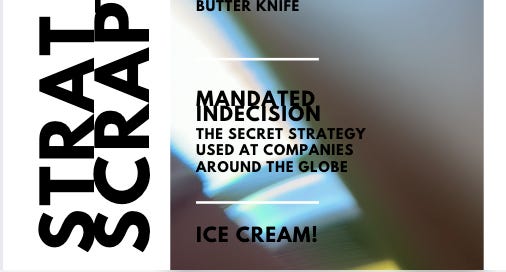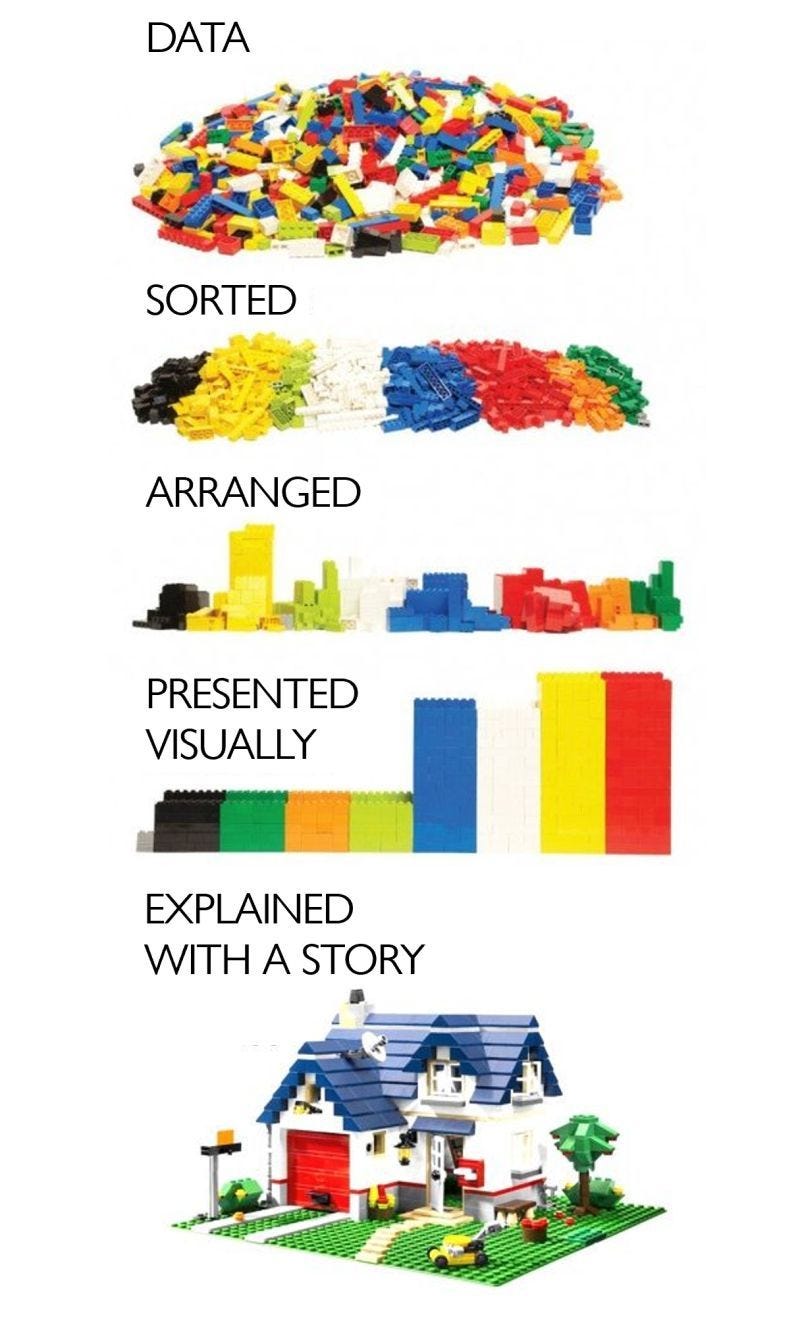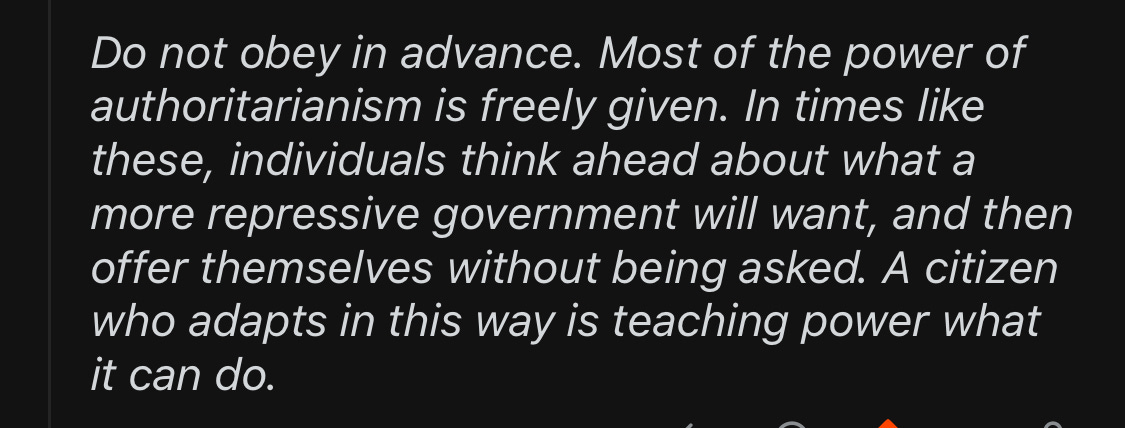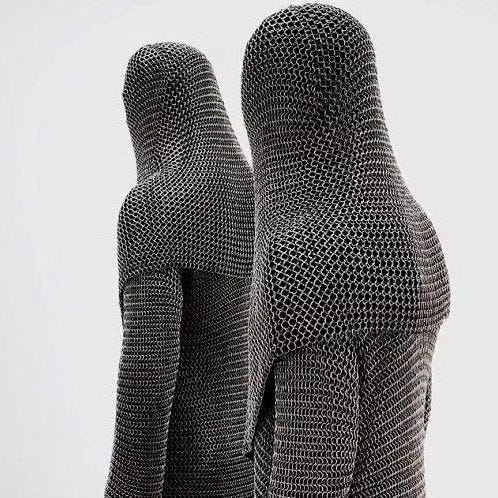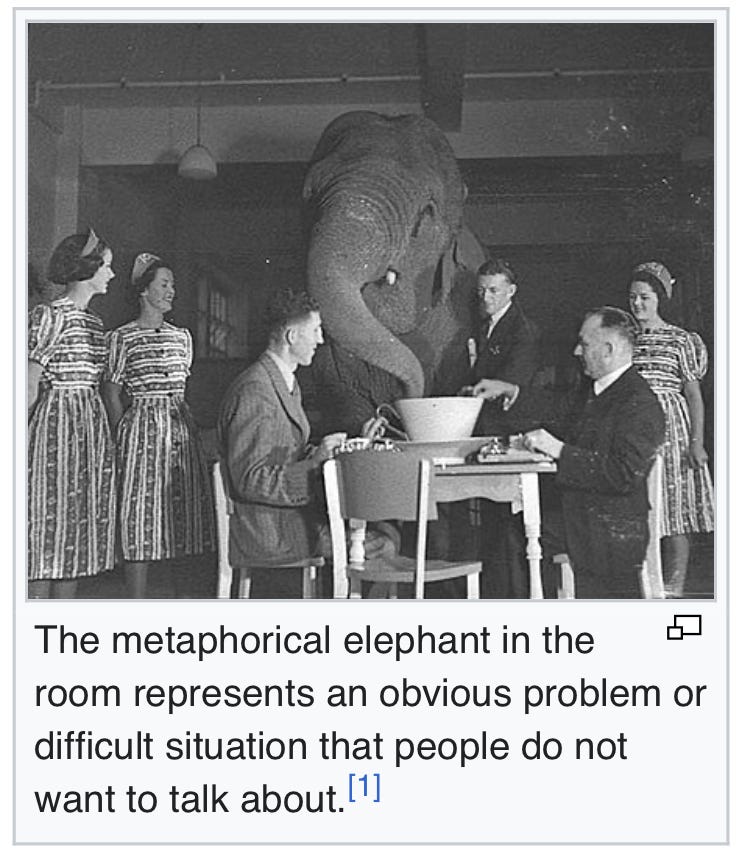////
For the longest time I have very strongly believed that you should never present something written by someone else. And when working with a team, the person presenting the work needs to have final say on any debates about the structure or contents.
It’s the difference between listening to someone tell a story vs listening to someone read a manual.
But the more meetings I’m in, and the more presentations I give or see, the more I realize the problem isn’t who is presenting.
The problem is whats being presented.
We really shouldn’t be presenting stories or manuals.
We should be presenting problems and solutions.
Stories have a time and a place, but they rely on the story teller. Manuals have a time and a place. But they are better received as a file for the recipient to read on their own time.
Anyone should be able to present the what and the how. Because it shouldn’t be complex enough to spark debate around how it is presented in the first place.
////
☝️Also banned for strategists creative agency people.
////
Google slides:
////
The key takeaway isn’t just ‘tell a story with your data’—it’s that when the full story is told, the data disappears. You don’t see individual bricks; you see a house.
The same applies to strategy. We’re often asked to include stats or data as proof, but strategy is built from many interconnected pieces of information. Isolating a single brick doesn’t validate the house—it removes it from the structure that gives it meaning.
////
It feels pretty diminutive to compare the seriousness of real life we’re experiencing right now to anything as novel as the work experience, but I’m going to make the comparison anyway…
This is something that is very true in the world right now.
But it is also relevant to a day in the life of a creative professional. Too often I’ll see team editing work based on expected feedback rather than for maximum quality.
Don’t pull your own teeth. Don’t pull the teeth of an idea because you expect it’s teeth to be pulled.
////
////
Another gripe about data. Statistics tell you what questions were asked, not what the answers are.
e.g. in the above (which shows the 36º30º parallel, historically significant as part of the Missouri Compromise, serving as the dividing line between free and slave territories) This isn’t a dunk on people from the south. It’s a failure to define artwork.
There’s a whole lot that could be written about this, but I’ll just say – interrogate your assumptions when doing research.
////
////
"To think, you have to write. If you're thinking without writing, you only think you're thinking. […] Everyone thinks they think. If you don't write down your thoughts, you are fooling yourself." — Leslie Lamport
WRITE DOWN YOUR THOUGHTS BEFORE YOU START WRITING DOWN THE THING TO BE PRESENTED.
////
(I had to restrain myself from using this information to mock up yet another STRAT_SCRAPS logo design)
////

